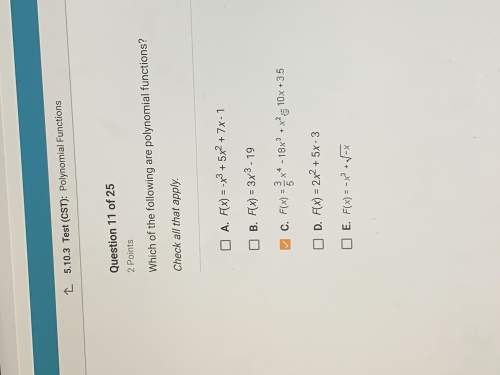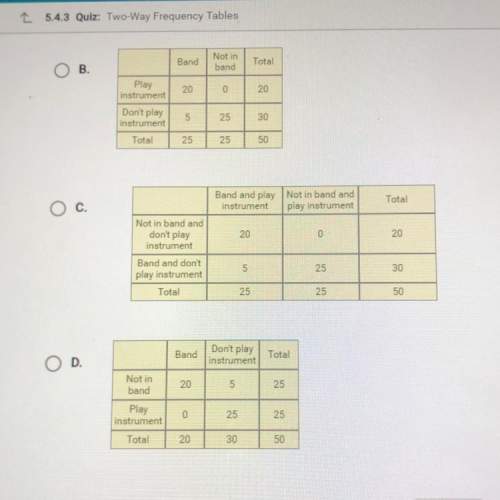Let ()=^+− ()=−.
b) Find (()) (()). Are they equal? Explain what your conclusion represents
...

Mathematics, 03.03.2021 07:40 jeremy7131
Let ()=^+− ()=−. b) Find (()) (()). Are they equal? Explain what your conclusion represents


Answers: 1


Other questions on the subject: Mathematics

Mathematics, 21.06.2019 22:10, bigboss3026
Which of the following circles have their centers in the third quadrant?
Answers: 2

Mathematics, 22.06.2019 00:00, thelonewolf5020
4. bob solved the inequality problem below incorrectly. explain his error and redo the problem showing the correct answer. −2x + 5 < 17 −2x + 5-5 < 17-5 -2x/-2 < 12/-2 x < -6
Answers: 2

Mathematics, 22.06.2019 00:30, wbrandi118
On ryan's last social studies test there were two types of questions true/false worth 3 points each and multiple choice questions worth 4 points each
Answers: 3

Mathematics, 22.06.2019 01:30, KillerSteamcar
Jacob is graphing the line represented by the equation −6x−5y=12.−6x−5y=12. he first plots the x-x- and y-interceptsy-intercepts as follows. which statement is correct regarding the intercepts on the graph?
Answers: 1
You know the right answer?
Questions in other subjects:














